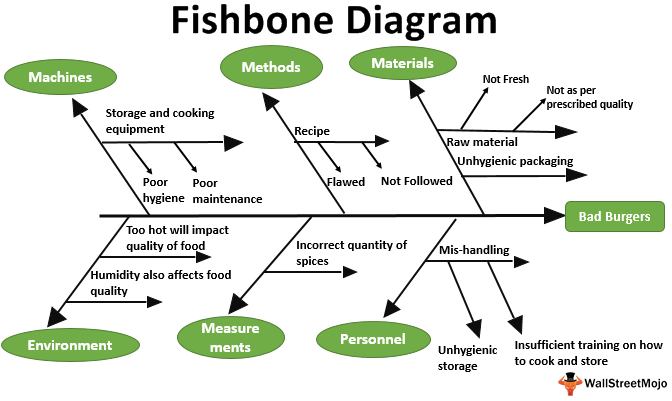

Some make it an arrow aiming at the problem to illustrate that this is the effect of the causes that are to be identified.

a whiteboard, with lots of space for causes, sub-causes, and root causes, since the team cannot know at the beginning of the process just how many of these will be needed. When using the Fishbone diagram it is particularly useful to do so on a large surface -such as e.g. It is also called an effect which is how the diagram also got the name Cause-and-Effect diagram. Thus the problems are the risks the team will want to manage. A problem could be something like the risk of customers not buying a car. When a team is doing Risk Management they will often need several Fishbone diagrams as each one only corresponds to one problem while several problems may arise during a project. If the team is hard pressed for time and have a lot of causes to look into, they can start with the ones they deem will have the highest impact or effect in causing the problem. The reason for this is so that the team does not waste time and effort on treating a cause that is unlikely to happen or that they won't be able to do anything about anyway. But the team does not have to find deeper levels for each cause they identify, only for those that they deem are "Very Likely" or "Somewhat Likely" to happen and will be "Very Easy" or "Somewhat Easy" to control or fix (see "Application" for reading more about these gradings). In this way the tool aims at organising the causes for the investigated problem. The process of making new "ribs" on the fish continues until the team agrees that the root cause has been reached.

Thus a cause-rib might have more subcauses, see the illustration. It does so by having the user brainstorm over various causes for the problem and continuously going to deeper levels by finding the cause of the previous cause. The purpose of the Fishbone diagram in Risk Management is to identify various root causes of a potential problem for a project or program. 3.2 Tools the Fishbone diagram is often used in conjunction with to achieve the end goal.The article will be based on previous literature on the subject. It will also touch upon tools that can be used in conjunction with the diagram to strengthen a project's management of risks. This article will consider how the diagram is appropriately used in Risk Management as well as its purpose and limitations. This allows the team to prioritise and better manage their risks. Part of this talk will have the outcome of having ranked the root causes according to their likelihood of happening and how easy they are to fix or control. The Fishbone diagram has the benefits of being a systematic and organised way of finding potential causes to a problem and of encouraging the team using it to talk about both the problem and its causes. This has made it a valuable tool for risk identification, and in a wider sense in Risk Management as it can help a team figure out how best to handle the risks with ARTA. Its use has since turned towards identification of root causes for problems. Ishikawa created it as a tool in a toolkit for quality control. It is also called an Ishikawa diagram after its creator Kaoru Ishikawa, or a Cause-and-Effect diagram. The investigated problem is placed of the "head" and the identified root causes comes out of the "spine" like ribs, see the illustration. The Fishbone diagram is named for its resemblance to a fishbone.


 0 kommentar(er)
0 kommentar(er)
